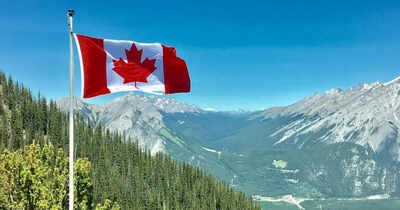In 2025, Canada, lengthy heralded as a haven for global scholars, enacted one of the restrictive visa regimes in a decade. Immigration, Refugees and Citizenship Canada (IRCC) information finds that just about 80% of Indian pupil packages have been rejected, a staggering surge in denials that has reshaped international pupil mobility. Candidates from Asia and Africa have additionally felt the brunt, signaling a regional recalibration in global training flows.For many years, North The united states was once a near-automatic first selection for bold scholars in the hunt for international publicity, with Canada’s popularity for protection, alternative, and high quality training drawing tens of hundreds yearly. But, fresh figures underscore a profound transformation: In 2024, just one.88 lakh Indian scholars won admission, slightly part of what was once recorded simply two years prior, in line with respectable information from the Canadian executive. The shift in choice is stark; Germany now leads as probably the most sought-after vacation spot for Indian scholars at 31%, whilst Canada’s percentage plummeted from 18% in 2022 to 9% in 2024.
The forces in the back of Canada’s tightened visa regime
The verdict isn’t arbitrary however rooted in home imperatives. Ottawa faces mounting pressures: housing shortages, strained infrastructure, and rising political calls for to prioritize native skill. In reaction, Canada has fortified visa scrutiny. Candidates will have to now display really extensive monetary assets, furnish complete find out about plans, and meet stricter language necessities.Monetary must haves have doubled to over CA$20,000, and paintings laws for college students have change into extra restrictive. Graduate language necessities are extra rigorous, whilst sure post-graduation employment avenues were curtailed. Even the Pupil Direct Movement, a mechanism designed to expedite approvals, has been shuttered. General, the federal government plans to factor 437,000 find out about lets in in 2025, representing a close to 10% relief from the former yr. Of those, 73,000 shall be allotted for postgraduate scholars, 243,000 for undergraduates and others, and more or less 120,000 for renewals and school-level scholars, as prompt via media studies.
Ripple results on scholars and establishments
For aspirants, the surge in rejections extends past procedural hurdles. Households make investments closely in packages, language assessments, and preparatory lessons, handiest to confront dashed aspirations. Many seen the Canadian find out about as a pathway to everlasting place of abode, a prospect now clouded in uncertainty.Universities, in particular smaller faculties reliant on global tuition, are confronting monetary pressure. Some face existential threats, with mergers or closures looming as income streams shrink. The tightening of North American corridors has speeded up a world recalibration, pushing scholars to rethink choice locations.
Germany emerges as the brand new epicenter
As Canada contracts, Germany is experiencing a outstanding surge in global enrolments. Its tough economic system, publicly funded universities, and increasing English-language programmes make it more and more sexy to Indian scholars. In step with Federal Statistical Place of business of Germany enrollment figures underscore this upward push: Indian pupil numbers have greater than doubled over the last 5 years, achieving just about 60,000 in 2025, up from 49,500 in 2023.Fields akin to generation, control, and engineering have change into in particular attractive in Germany because of cost-effective training and decrease residing bills in comparison to North The united states. Insurance policies supporting clearer occupation pathways and enhanced retention alternatives additional cement its enchantment. Different rising hubs come with France, Finland, Australia, South Korea, Japan, Malaysia, and the Heart East.
A world rebalancing in global training
This phenomenon alerts now not simply closed doorways however a seismic shift in call for. Indian scholars more and more prioritize locations that mix affordability, high quality, and occupation sustainability. Conventional leaders like the USA, UK, and Canada are confronting native constraints that erode their aggressive edge, whilst choice markets achieve traction.The fashion illustrates a extra nuanced panorama: World training is now not ruled via ancient status by myself. Scholars are agile, strategically weighing charge, alternative, and long-term employability. For policymakers and establishments, the problem is apparent—adaptation is crucial, or chance ceding flooring to emerging international competition.

